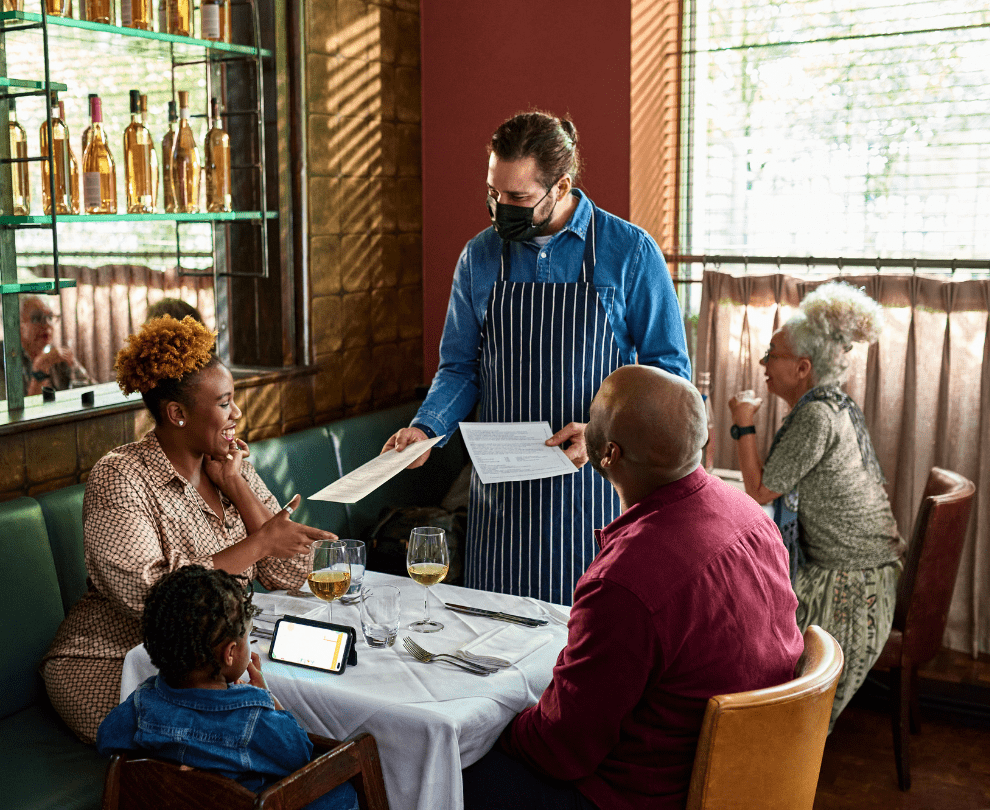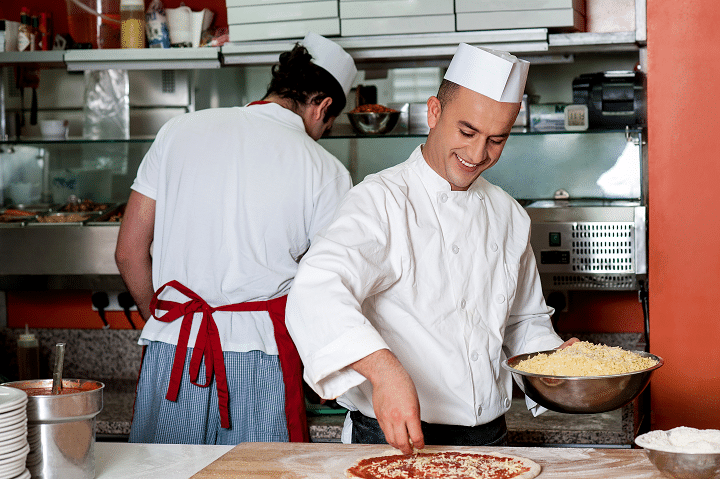Sign up for restaurant insights
When you’re launching a restaurant venture, renting a space can help you save money. A restaurant lease reduces up-front costs, increases your liquidity and eliminates some of the fees that come with buying a property, including mortgage insurance and property taxes. Before you sign on the dotted line, however, make sure to do your due diligence. Asking the right questions and considering critical factors can help you negotiate a great deal.
The basics of a restaurant lease: what you need to know
The right lease for you depends on the business you want to run. To get clear on your budget, concept and planned operations, write a restaurant business plan; use the Grubhub restaurant business guide if you need a template. You’ll come out with a better idea of the nonnegotiable things you need in a restaurant space as well as a list of real estate wants and limitations. With that information, it’s easier to choose a lease type and decide what factors to negotiate.
Types of restaurant leases
A restaurant lease is a commercial lease; this type of real estate often comes with different terms than a residential rental agreement. As a restaurant owner, you can typically choose from a few common lease types:
- Gross lease. This is the most straightforward restaurant lease agreement. It’s similar to a residential lease; you’ll pay a set amount of rent every month, and the landlord agrees to take care of insurance, property taxes, building maintenance and possibly utilities. You might pay more in rent each month, but the predictable expenses allow easier budgeting.
- Net lease. In a net lease, you pay for rent and property taxes on your restaurant space. Depending on the type of net lease, you might also be responsible for insurance and/or maintenance; the terms are often negotiable. Your monthly rental payments will be lower and you won’t need to wait on the landlord for repairs, but the other costs can add up quickly. Make sure to investigate the building condition carefully to get a sense of potential maintenance bills.
- Percentage lease. With this type of lease, you pay rent plus a share of your sales — usually, after you hit a predetermined revenue level. Percentage leases can help keep your costs down during the start-up phase, but they can also eat into your cash flow significantly if the restaurant is a success.
- Variable lease. If you choose a variable restaurant lease, your rent will either increase gradually over time or change based on the performance of a specific index. If the index rises, so will rent prices; if it drops, you’ll pay less. This type of lease often has lots of room to negotiate the terms of the chosen index, rate-increase percentages, rate-increase caps and the increase schedule.
Negotiating the restaurant lease
Restaurant leases are rarely set in stone — there’s almost always room to negotiate. To put yourself in the best position, come armed with information about the local commercial rental market. Updated information about going lease rates can give you leverage.
Factors you can discuss in a lease negotiation include:
- Lease length with the option to renew. The restaurant industry is challenging, and long leases can create a significant financial burden if your business doesn’t succeed. Consider asking for an initial lease term of 1 or 2 years with the option to renew. That way, you’re not roped into a 5-year lease, but you can stay if things go well.
- Permission to sublet. If you can’t get a short lease, ask the landlord to agree to a sublet. If something goes wrong, you can lease it to another tenant to recoup some of the costs.
- Renovation options. Restaurants have specific functionality demands for electricity, cooling, venting, plumbing, equipment, dining spaces and decor. Make sure to explain exactly how you plan to renovate the space to accommodate these needs, and ask the landlord to write it into the lease agreement.
- Rent increase schedule and caps. Landlords typically increase rent on a commercial space at regular intervals, but you can negotiate the timing. For example, you might request that the first increase not happen until you’ve been in business for at least a year. It’s also worth asking for a cap on the percentage or dollar amount to prevent costs from outstripping profits.
- Competitor clauses. To protect your business, you can ask for a clause that prevents the property owner from leasing another unit in the same building to a competing restaurant or retail space.
- Parking spaces. Is the building’s parking lot shared with other tenants, office spaces or businesses? Consider negotiating reserved spaces for your restaurant to ensure customers have room to park during their visits. If you’re located in an urban area or on a main street, you can also look into securing one or two spots for pickup customers and delivery drivers.
- Restaurant tenant inducements. If a landlord or commercial property manager is eager to lease a restaurant space, they might be open to inducements: perks that convince you to sign an agreement. You may be able to get a few months for free, for example, or the owner or leasing agent might agree to upgrade the building before you move in.
Restaurant lease best practices
A lease is a binding legal agreement, so it’s important to proceed with caution. These best practices can help you finalize a commercial real estate lease with favorable and manageable terms:
- Nail down a start date for payments. Make sure the timing of your first payment is written into the lease agreement. In some cases, your landlord or leasing agent might agree to wait until your new restaurant is open for business.
- Split repair costs. Some landlords will agree to split the cost of building repairs and renovations to the space. If you’ll be upgrading the building, you can negotiate a break on rent for the first month or two.
- Ask about percentage rent. Before you agree to hand over a percentage of your profits, explore your options. See if your landlord will accept the percentage instead of a different expense, such as property taxes or insurance. As the restaurant becomes more successful, you might be able to eliminate the base rent entirely and simply pay a larger percentage. This strategy benefits the building owner and helps you control costs.
- Avoid long-term leases. As you plan for a successful restaurant, it’s a good idea to hedge your bets with a shorter lease. You won’t get stuck in a bad situation or an unsuitable space, and you can make adjustments or move to a new location as needed in the future.
- Check renewal and termination terms. Read these sections carefully to understand what you’re getting into. Examine the allowable rent increases, the renewal term lengths and the right of first refusal on other units for extra square footage. When it comes to termination, check the landlord’s eviction terms and understand the fees you’ll pay if you break the lease. All these factors are negotiable, so don’t be afraid to ask for changes.
- Seek legal advice. Hire a real estate attorney to review your lease and ensure it doesn’t contain hidden fees or sneaky clauses. If you’re opening a restaurant in a major United States market, such as Las Vegas, New York, San Francisco, Los Angeles or West Hollywood, you might want to bring in a lawyer earlier to help with negotiations.
Grubhub has your best interests at heart
Negotiating a favorable restaurant lease sets your business up for success. Want more tips to help your restaurant thrive? Join Grubhub Marketplace to get helpful content to guide you through your restaurant journey.





